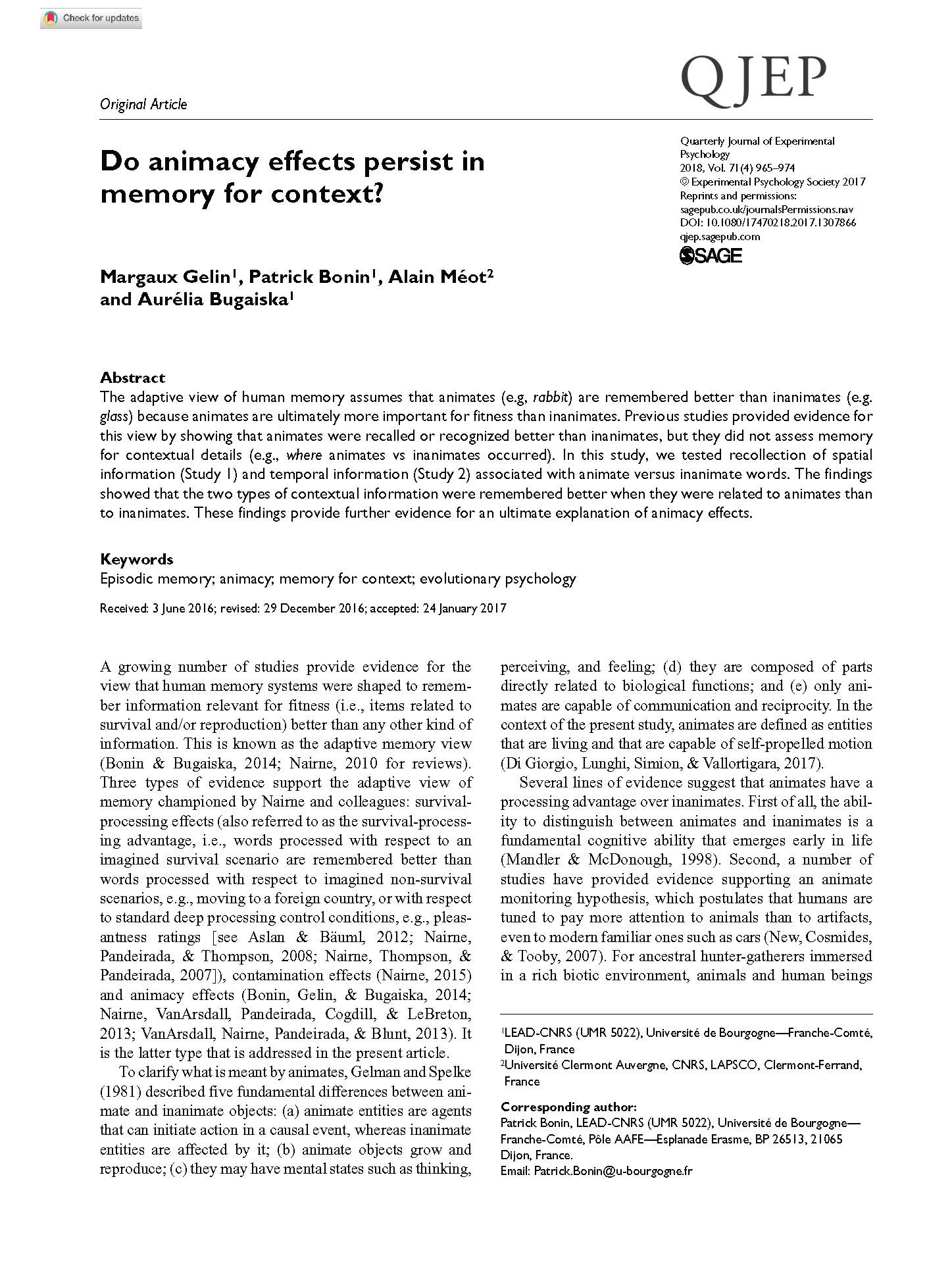The adaptive view of human memory assumes that animates (e.g, rabbit) are remembered better than inanimates (e.g. glass) because animates are ultimately more important for fitness than inanimates. Previous studies provided evidence for this view by showing that animates were recalled or recognized better than inanimates, but they did not assess memory for contextual details (e.g., where animates vs inanimates occurred). In this study, we tested recollection of spatial information (Study 1) and temporal information (Study 2) associated with animate versus inanimate words. The findings showed that the two types of contextual information were remembered better when they were related to animates than to inanimates. These findings provide further evidence for an ultimate explanation of animacy effects.
Do animacy effects persist in memory for context?
